The Psychology of
Viral Marketing
Why micronetworks are the secret to going viral.
Introduction
Viral marketing is like inner peace.
- Everybody wants it.
- Nobody can achieve it.
But imagine if you could achieve it.
Just target a few hubs, then bam: Exponential growth.
To solve this mystery, I sifted through hundreds of academic papers — everything from network theory to epidemiology.
Stuff like this:

...which led to this:

Ultimately, I had an epiphany: It IS possible to control virality.
This guide explains how.
Problems With Virality
Typically, marketers disperse a message by targeting “influencers” who are connected to many people.
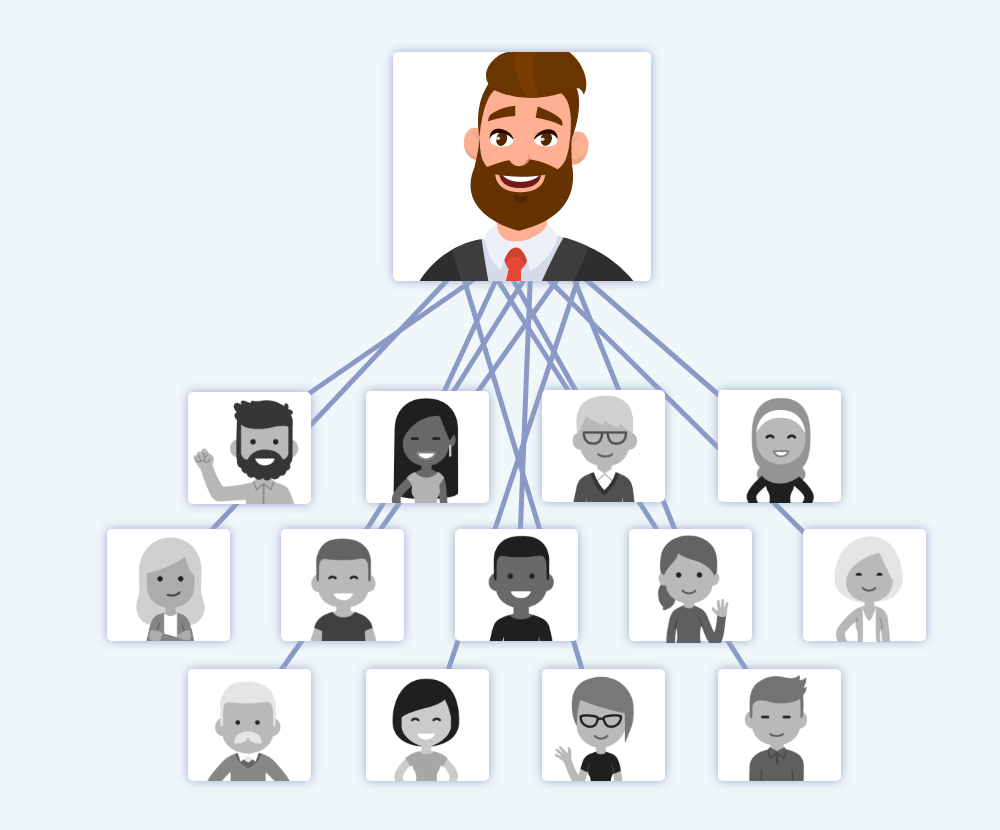
And it can work. However, it restricts virality for two reasons:
Problem #1: Low Interconnectivity
Although recipients are connected to the source – the influencer — they aren’t connected to each other (Lerman & Ghosh, 2010).
To maximize diffusion, networks need interconnectivity:

Suppose that Person A shares a message. Then Person B reshares it. If the network is interconnected, Person C will see the message twice:
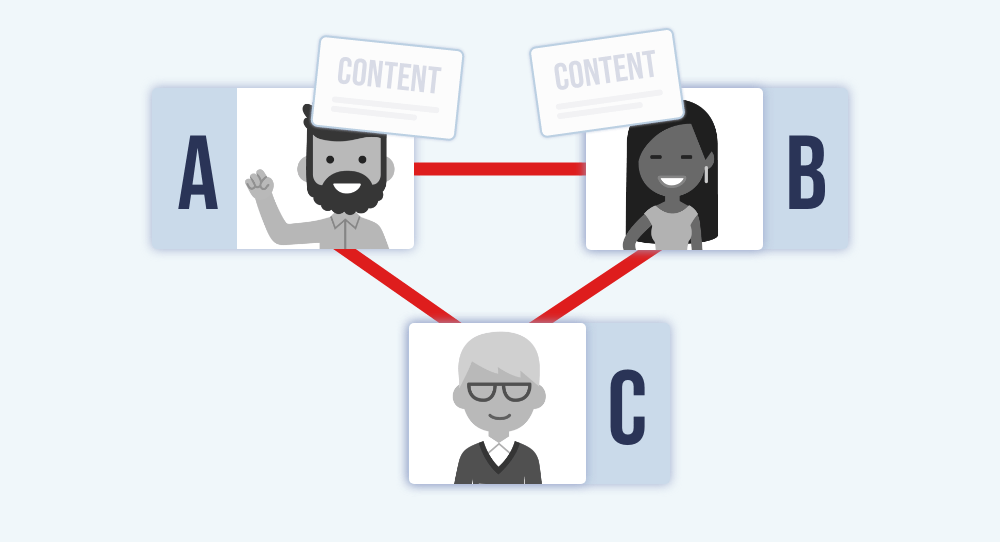
More exposures lead to more infection. More infection leads to more exposure. In other words, interconnections are important because they trigger a snowball effect of virality.
Problem #2: Weak Connections
You're more likely to open a personal email from your boss, compared to a mass email from an influencer.
Despite many connections to an influencer, these connections are weak. Virality needs strong connections for transmissibility.
Why Micronetworks Are the Secret to Going Viral
You can maximize the dispersion of a message by targeting a type of network that I call a “micronetwork.”
A micronetwork has three criteria:
- Interconnected. People know each other.
- Small. Most people know everyone.
- Strong. People frequently interact.
The second criterion might seem weird. Instinctively, most marketers want to disperse their message in “large” networks.
However, most epidemics originate from small networks — like families (Ball, Mollison, & Scalia-Tomba, 1997). One person who becomes infected will transmit the infection to everyone else because they live in the same house.
Then it triggers a snowball effect.
Once the family becomes infected, adjacent networks (e.g., neighbors across the street) become infected.
And it continues spreading outward.
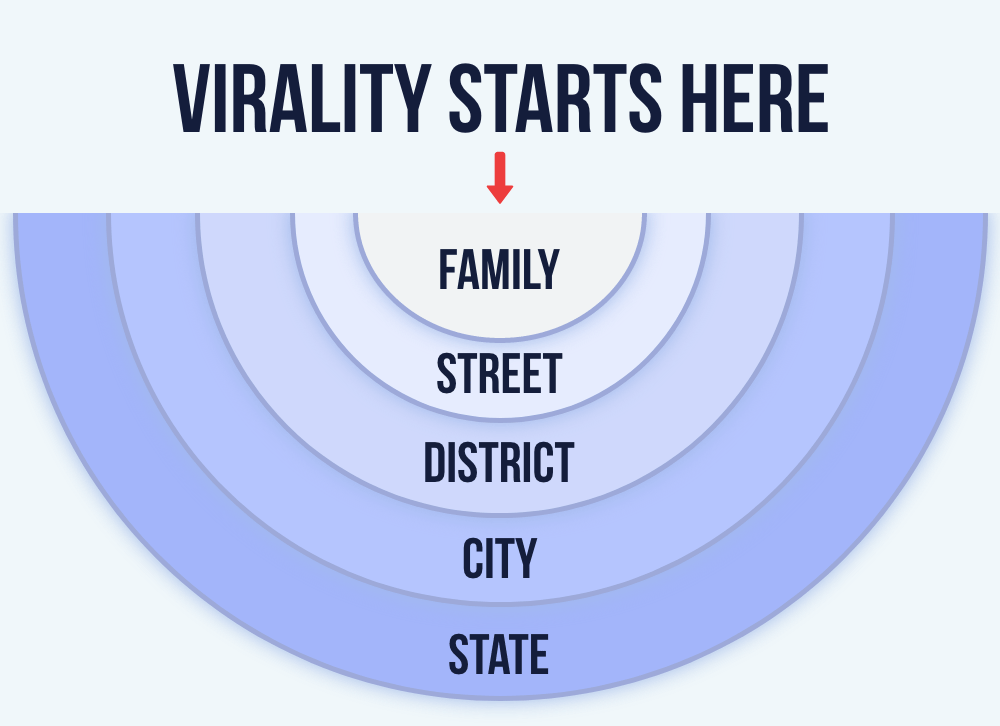
Suddenly the whole region becomes infected — and it all started from a tiny network.
Marketing Applications
1) Target Micronetworks, Then Scale Outward
Most entrepreneurs want a “large” market for their products.
But, ironically, this approach is counterproductive. Customers are disconnected in large markets. And disconnectivity hinders word of mouth.
Instead, target a tiny market. Then scale outward.
Case Study: Facebook
Zuckerberg didn’t launch Facebook to the whole world — otherwise, it would have failed.
Rather, he targeted a micronetwork: Harvard students.
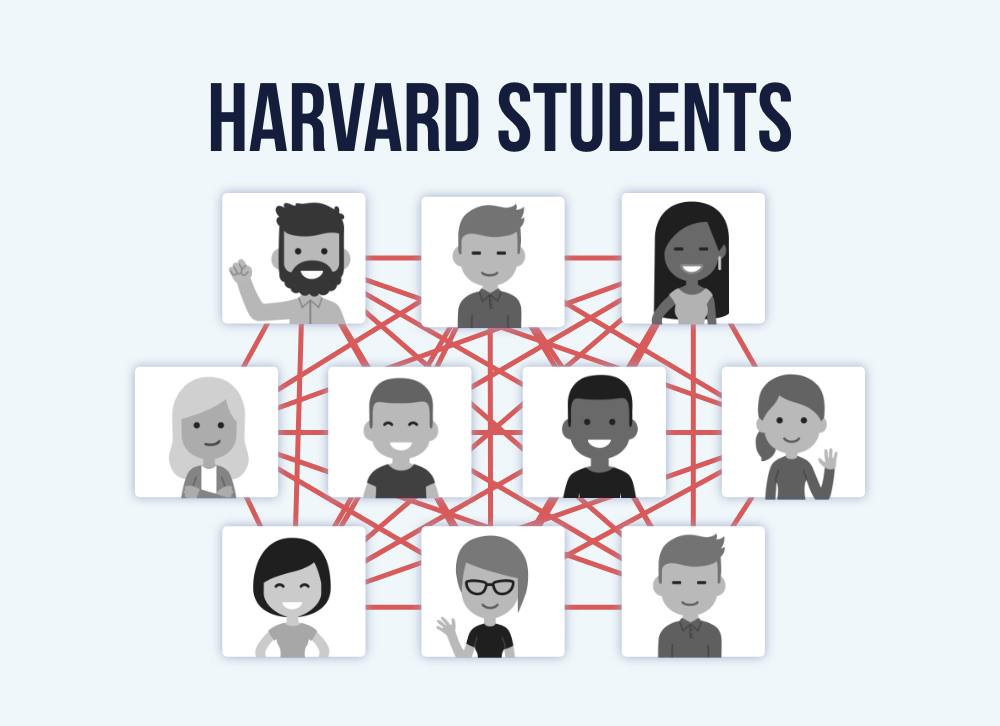
Facebook gained traction because word of mouth spread rapidly in this interconnected network. Within 24 hours, half of Harvard signed up (The Guardian, 2007).
And, naturally, Harvard students aren’t separated from the world. They have friends at nearby schools.
Infection started spreading to adjacent networks, like other schools:
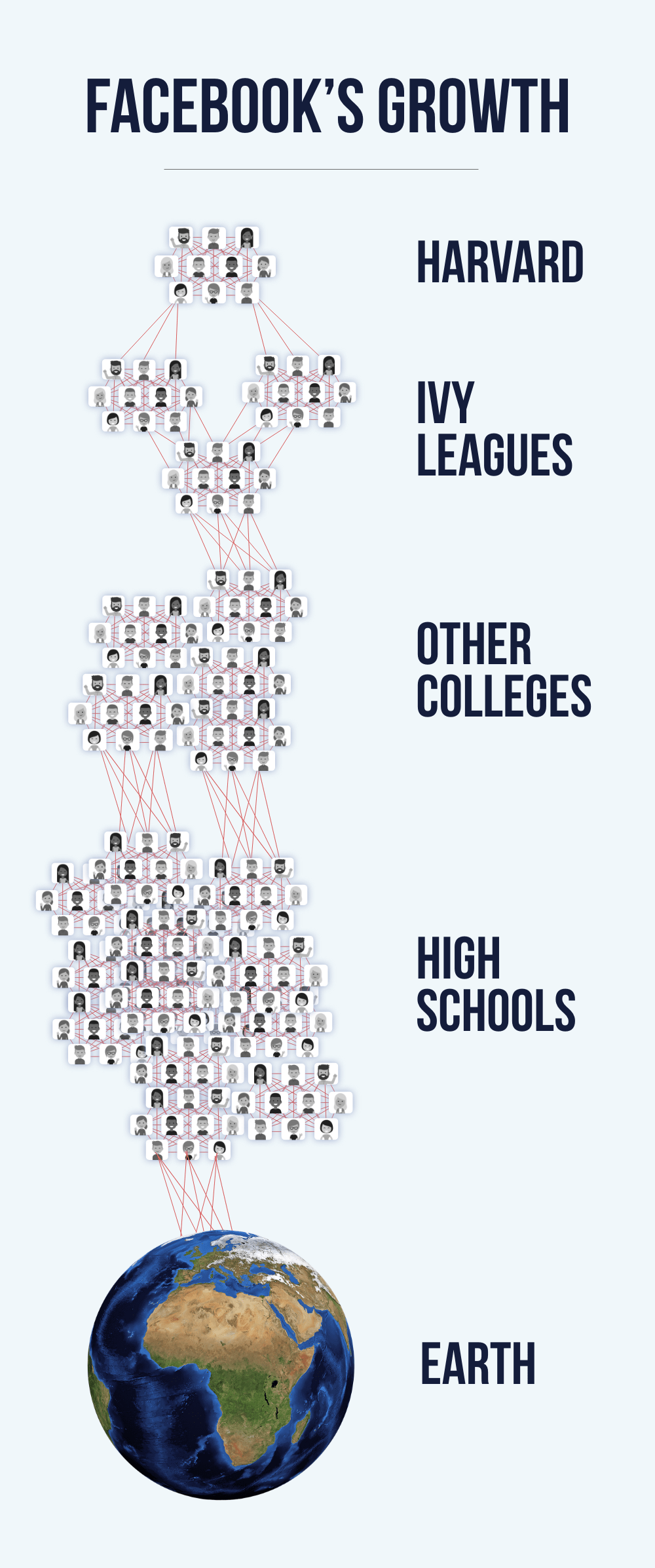
Facebook infected the entire planet.
And it all started from a micronetwork.
2) Create Content for Interconnected Segments
Content creators should always consider the interconnectivity of audiences. For example, you can categorize content into two types:
- Horizontal. Topics that spread across domains
- Vertical. Topics in a single domain
Consider my guides.
I noticed that vertical topics (e.g., pricing) perform better than horizontal topics (e.g., choice, attention).
I realized that horizontal topics attract a highly fragmented audience, while vertical topics attract people who share the same need. People who are more connected.

Always consider the segmented nature of topics. Choose topics that will reach interconnected people.
3) Disperse Content in Interconnected Networks
Suppose that you want to reach photographers.
Which social network would be the best medium to promote your content about photography?
Answer: Any network where photographers are interconnected.
Suppose that a photographer shares your article on Facebook? Who are their typical connections? Friends? Family? Coworkers? Maybe some photographers?
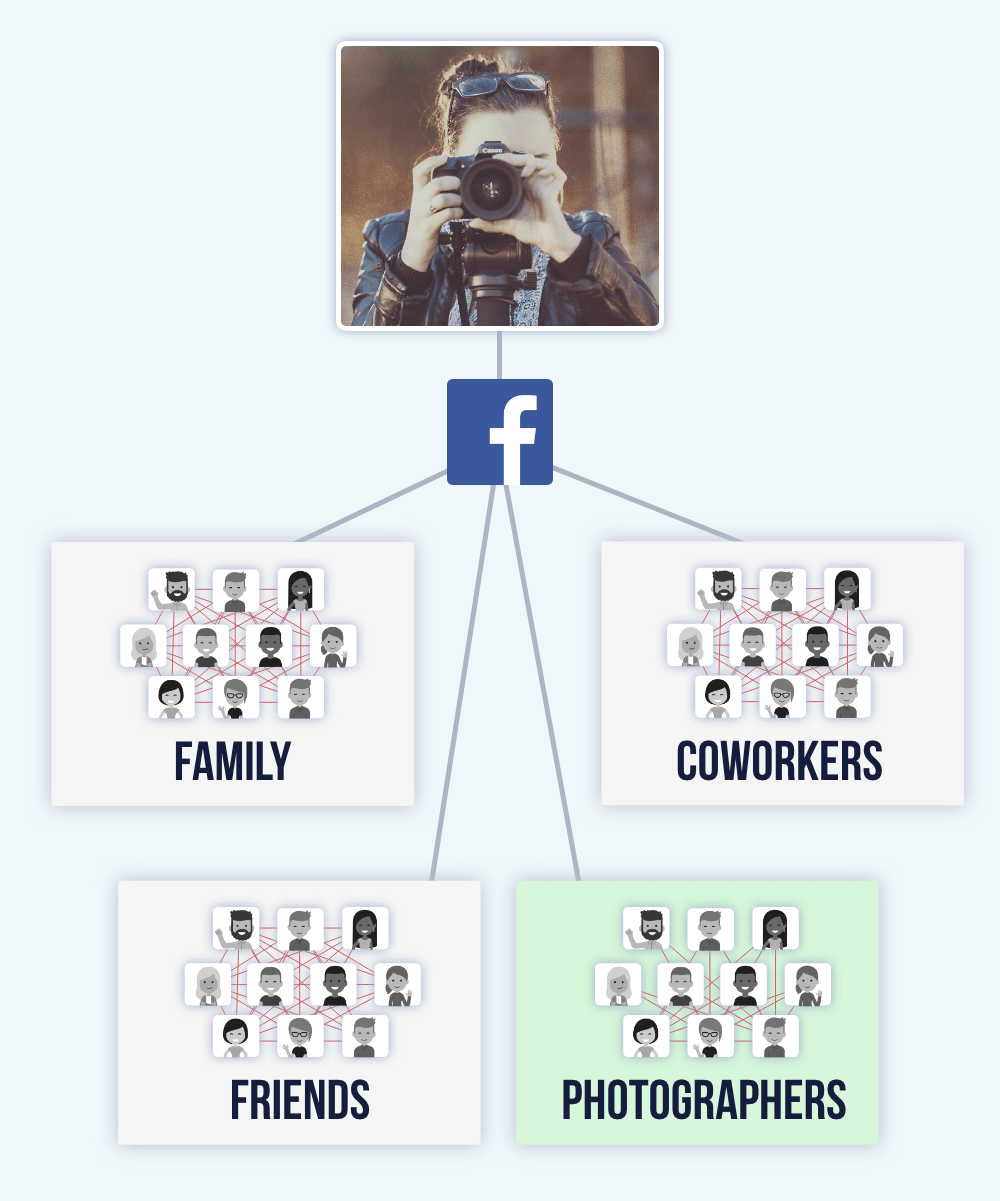
Only a fraction of their connections will be relevant to this message.
Instead, target a network in which photographers are interconnected. Every time that a photographer shares the message, it should be transmitted to other photographers who are susceptible to infection. In this case, LinkedIn or Reddit might be a better avenue.
- Ball, F., Mollison, D., & Scalia-Tomba, G. (1997). Epidemics with two levels of mixing. The Annals of Applied Probability, 46-89.
- Lerman, K., & Ghosh, R. (2010, May). Information contagion: An empirical study of the spread of news on digg and twitter social networks. In Proceedings of the International AAAI Conference on Web and Social Media (Vol. 4, No. 1, pp. 90-97).
- The Guardian. (2007, July 25). Social networking takes hold. Retrieved from https://www.theguardian.com/technology/2007/jul/25/media.newmedia
